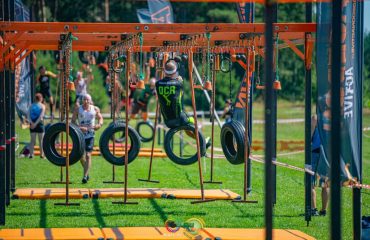 Mobility. Stability. We hear and read about both when injured, but many times aren’t sure what needs to be done…or why…or when.
Mobility. Stability. We hear and read about both when injured, but many times aren’t sure what needs to be done…or why…or when.
As a general, all areas of the body needs a balance of both. With that said, certain joints or areas of the body require more stability, and others require more mobility; these areas tend to alternate – the foot needs stability, ankle mobility, knee stability, hip mobility…and so on up the body.
Because of postures, positions, and habits people maintain on a daily basis, we often do not have the movement required in some areas, such as the ankles and hips. These areas need mobilized. Some areas of our bodies need more control and stability, especially as we increase the volume of work we are doing. These areas need to be stabilized.
Let’s dive into this a little deeper.
Why Mobility Matters
Some of the muscle strain types of injuries we develop are due to lack of mobility. If an area is not moving easily through the range of motion required to perform the activity you want to perform, the muscles surrounding the area are required to work harder to get the area to move. The other situation that can happen is other areas of the body compensate to allow you to perform a movement. Both situations can become problematic.
Just as an example, this can be one (of many) of the causes of shin splints in runners. Due to the shoes people wear and the amount of sitting most people do, ankle mobility is often lacking when it comes to the ability to pull your toes up toward you. That motion is required when we bring our foot forward, and even more important when running uphill or on uneven terrain. If you don’t have good motion in the ankle, the muscles on the front of your leg end up kicking in overdrive to pull the foot up every time. Eventually, the muscles fatigue, resulting in shin splints.
Another example with lacking ankle mobility is back pain when squatting. Our bodies require a certain amount of ankle dorsiflexion so the lower leg can move forward properly and allow your torso to stay upright. If you lack the mobility necessary, your body will compensate to keep your center of gravity. This compensation often results in an increased forward trunk lean. Over time, that forward trunk lean places increased stress on the low back musculature, resulting in pain.
Why Stability Matters
On the other hand, some of the muscle and tendon injuries we get are due to a lack of stability and control. Every time we move, certain areas of our body need to be stable. As resistance or volume increase, the muscles are required to work harder and longer to stabilize. If we don’t have good stability or muscular endurance, those areas fatigue quickly, resulting in pain and injury.
A common example is shoulder pain. The shoulder is a very mobile joint, so we have a lot of small, deep muscles that stabilize it and keep it in place. When we are doing anything overhead or hanging, those muscles are firing. With the training you do day after day, if you aren’t strengthening them properly they will eventually tighten up and stay tight. This happens initially without you even realizing it is happening. Eventually, it results in shoulder pain.
The Fix
The only way to truly resolve injuries (after you addressed the pain symptoms themselves) and keep them resolved is to address the mobility and stability deficits. If this is ignored, the pain will return and you will essentially continue in the injury cycle you are stuck in.
Written by Brianne Showman. Brianne is a physical therapist and running coach with Get Your Fix Physical Therapy And Performance. Her focus is on helping athletes resolve injuries in less time by getting to the root of the problem, improving movement patterns, and incorporating proper training to help the body to move more efficiently, more powerfully, and in less injury-prone ways.









